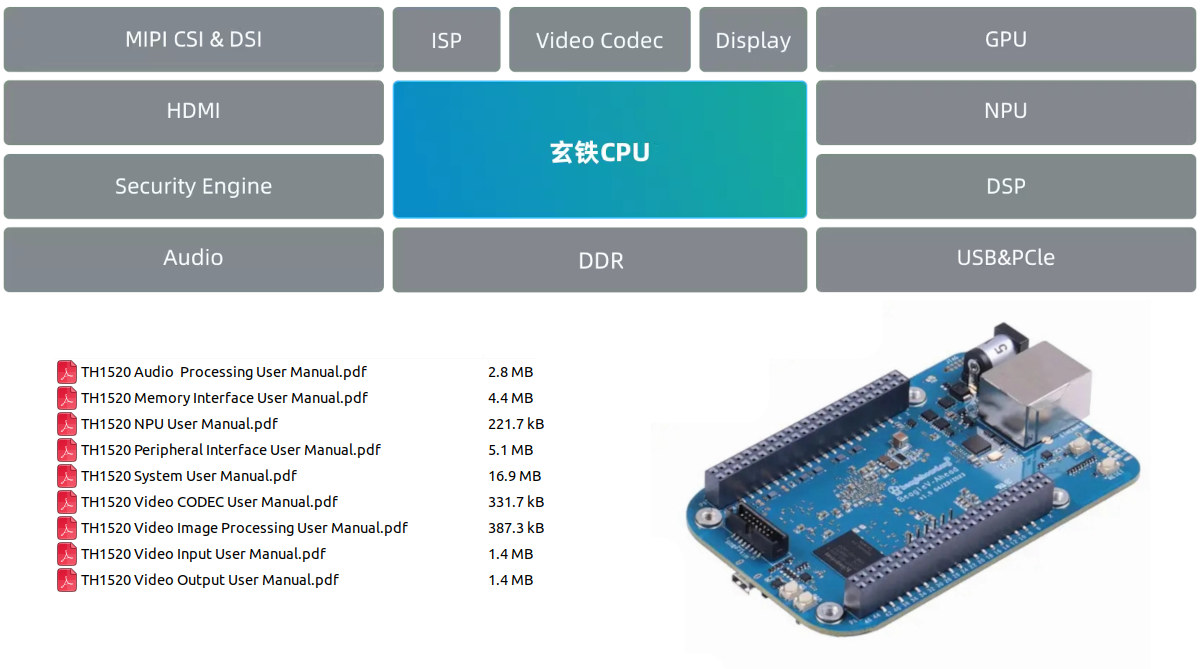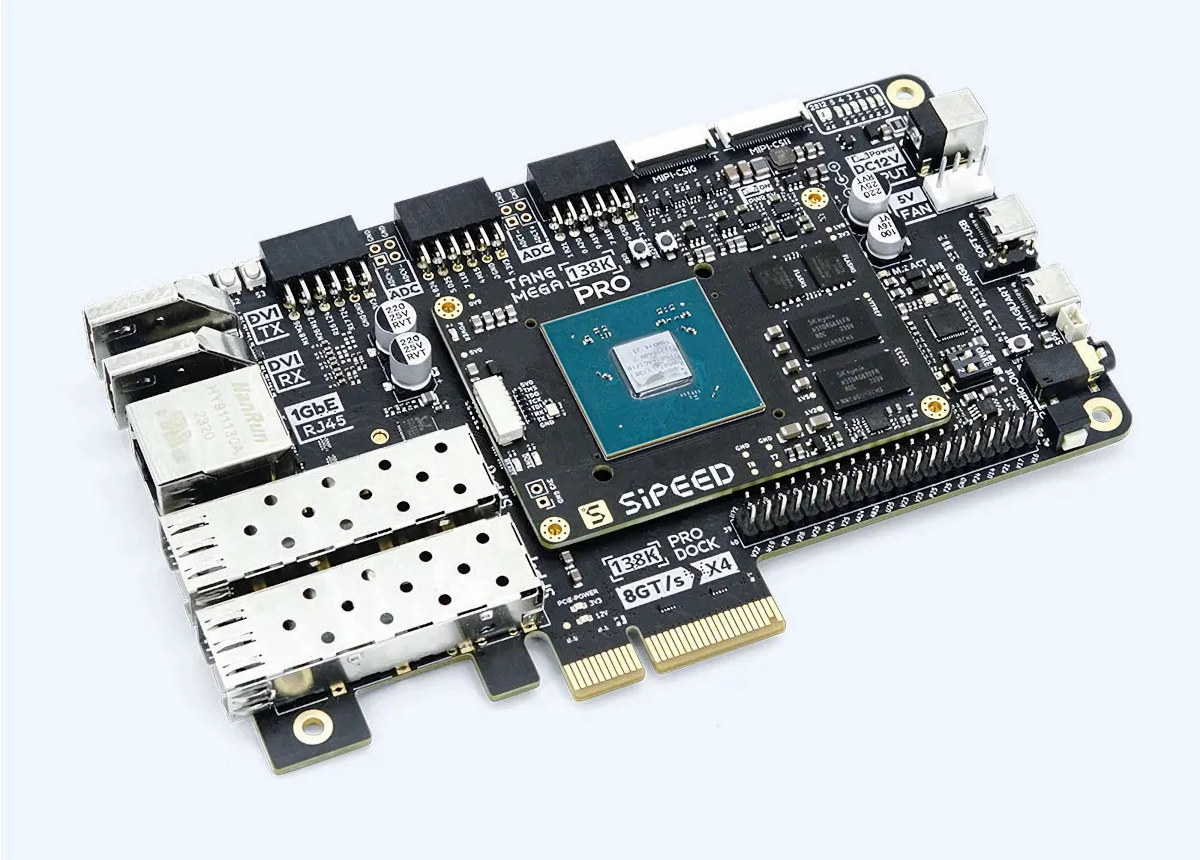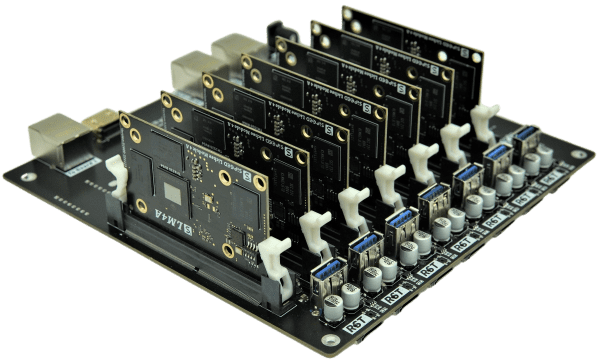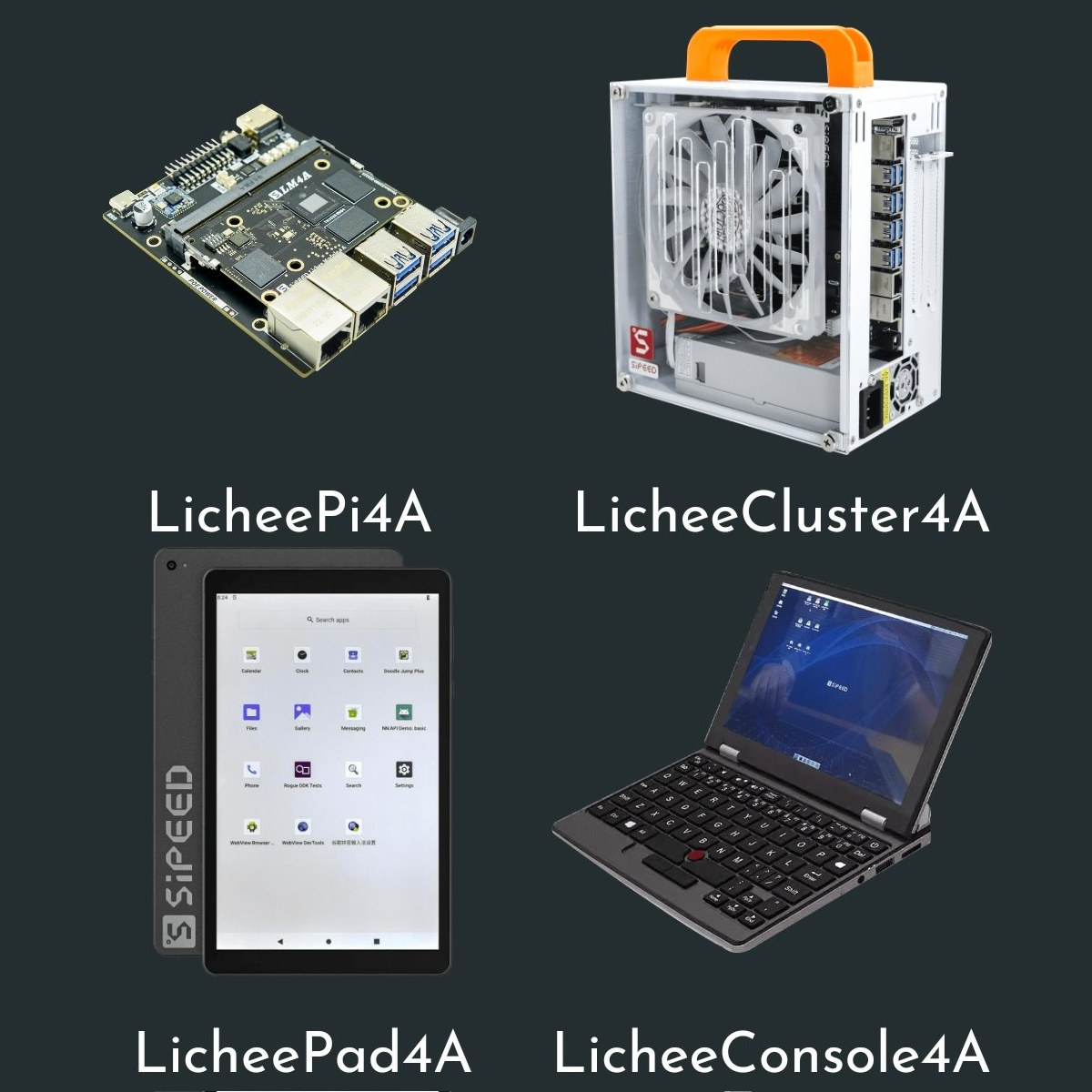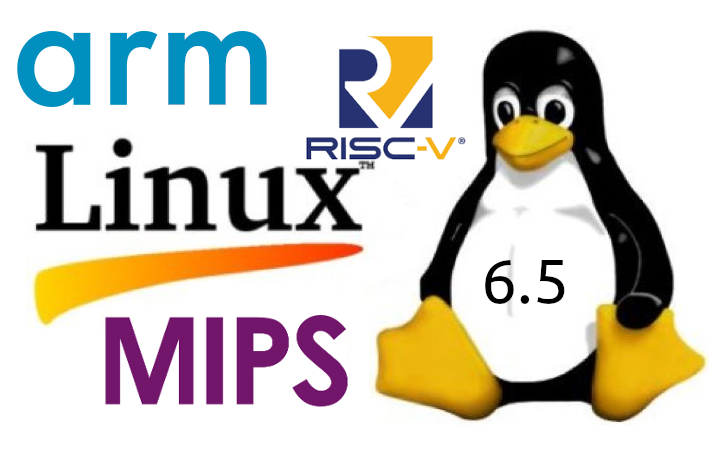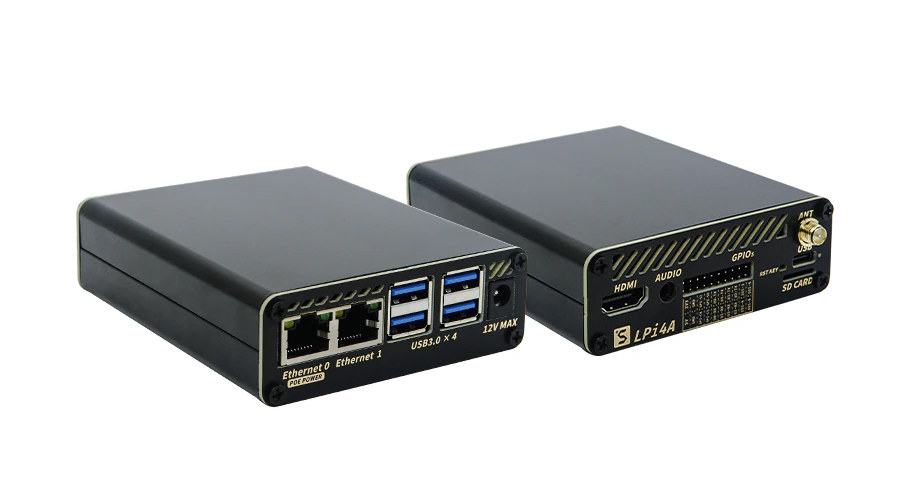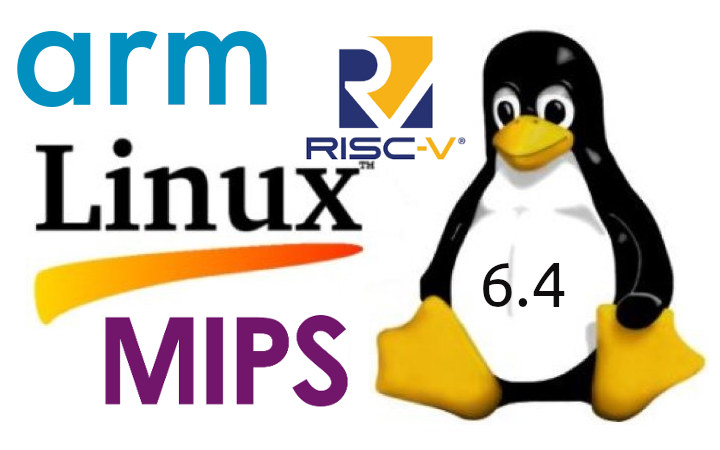We’ve been writing about international Black Friday and Cyber Monday deals and coupon codes since 2014, as US-centric promotions such as Amazon’s Black Friday and Cyber Monday deals are not always available to the international audience of CNX Software. So once again, we’ve searched at Black Friday and Cyber Monday 2023 international promotions and discount codes from specific manufacturers as well as popular online stores such as Aliexpress, Banggood, and others. Aliexpress Black Friday and Cyber Monday event Aliexpress will have a Black Friday (and Cyber Monday) event in 2023, but we have limited details at this time since it will only start on November 23, contrary to some of the other deals we’ll feature below which are already up and running. But the event will have two periods: Nov 20-22 PT – Warm Up event where users can find and add items to the cart before purchasing during the […]
Alibaba T-Head TH1520 user manuals released
Further Alibaba T-Head TH1520 quad-core RISC-V processor documentation has been released with nine user manuals covering video and audio processing, peripheral interfaces, memory interfaces, system registers, and the built-in NPU for video acceleration. We first noted the TH1520 RISC-V SoC in the expensive web3-focused ROMA laptop in October 2022, but since then there have been some very interesting developments with the release of Sipeed’s Lichee Pi 4A SBC and various other platforms based on the LM4A system-on-module plus the BeagleBoard.org’s BeagleV Ahead. Both boards also have preliminary support in mainline Linux with the Lichee Pi 4A making it to Linux 6.5, and the BeagleV Ahead was added to the just-released Linux 6.6 kernel. However I had not noticed documentation for the processor was not released publicly until now as both Sipeed and Beagleboard.org have now made available nine user manuals in English, and the Sipeed link has the Chinese versions […]
Sipeed Tang Mega 138K Pro Dock features GOWIN GW5AST FPGA + RISC-V SoC
Sipeed has launched another FPGA board part of their Tang family with the Tang Mega 138K Pro Dock powered by a GOWIN GW5AST SoC with 138K logic elements as well as an 800 MHz AE350_SOC RISC-V hardcore unit, and featuring a PCIe 3.0 x4 interface, DVI Rx and Tx, two SFP+ cages, a Gigabit Ethernet RJ45 port, and more. We’ve previously seen companies like AMD (Xilinx) and Microchip produce FPGA SoCs with hard cores such as the Zynq Ultrascale+ family (4x Cortex-A53) or the PolarFire MPSoC (4x 64-bit SiFive U54 RISC-V cores), but it’s the first time I see GOWIN introduce an FPGA + RISC-V SoC, as all the previous parts that came to my attention were FPGA devices. Sipeed Tang Mega 138K Pro Dock specifications: System-on-Module – Sipeed Tang Mega 138K Pro SoC FPGA – GOWIN GW5AST-LV138FPG676A with 138,240 LUT4 1,080 Kb Shadow SRAM (SSRAM) 6,120 Kb Block SRAM […]
Lichee Cluster 4A mini-ITX RISC-V cluster board launched for $929 and up
As expected, Sipeed has now launched their Lichee Cluster 4A mini-ITX cluster board and box taking up to seven RISC-V modules with prices starting at $929 on Aliexpress. All kits on offer are fitted with seven Sipeed LM4A system-on-modules based on the T-Head TH1520 quad-core RISC-V processor in either 8GB/32GB or 16GB/128GB memory and storage configuration. Lichee Cluster 4A specifications: SoM – 7x Sipeed LM4A modules with Alibaba T-Head TH1520 processor (4x C910 @ 1.85GHz) and a total of either 56 or 112GB LPDDR4X, and 224GB or 869GB eMMC flash Storage – 7x microSD card slots, one per slot Video Output – 1x HDMI port connected to slot 1 Networking 1x Gigabit Ethernet port for the cluster 1x Gigabit Ethernet port for slot 1 only 1x Ethernet for BMC control USB 7x USB 3.0 ports, one per slot 1x USB 2.0 port for BMC Power Supply – 12V DC input […]
Sipeed unveils RISC-V tablet, portable Linux console, and cluster
Sipeed has unveiled three new hardware platforms based on the LM4A RISC-V system-on-module found in their LicheePi 4A SBC, namely the Lichee Cluster 4A cluster for native RISC-V compilation, the Lichee Pad 4A 10.1-inch tablet running Android 13 or Debian, and the Lichee Console 4A a portable Linux console with a small 7-inch display and a built-in keyboard. As a quick reminder, the Sipeed LM4A SoM is based on the Alibaba T-Head TH1520 quad-core RISC-V processor @ 1.8 to 2.5 GHz that has just gotten some support in Linux 6.5, comes with up to 16GB RAM and up to 64 GB eMMC flash, integrates two Gigabit Ethernet PHY, and exposes all I/Os through a 260-pin SO-DIMM connector. We’ve previously noticed the TH1520 module delivers performance similar to the Raspberry Pi Compute Module 4 and even more when using a customized toolchain. Lichee Cluster 4A All new Sipeed hardware platforms feature […]
Linux 6.5 release – Notable changes, Arm, RISC-V and MIPS architectures
Linus Torvalds has just announced the release of Linux 6.5 on the Linux Kernel Mailing List (LKML): So nothing particularly odd or scary happened this last week, so there is no excuse to delay the 6.5 release. I still have this nagging feeling that a lot of people are on vacation and that things have been quiet partly due to that. But this release has been going smoothly, so that’s probably just me being paranoid. The biggest patches this last week were literally just to our selftests. The shortlog below is obviously not the 6.5 release log, it’s purely just the last week since rc7. Anyway, this obviously means that the merge window for 6.6 starts tomorrow. I already have ~20 pull requests pending and ready to go, but before we start the next merge frenzy, please give this final release one last round of testing, ok? Linus The earlier […]
LicheePi 4A RISC-V SBC gets 16GB/128GB version, metal enclosure, 10.1-inch display, and more accessories
LicheePi 4A quad-core RISC-V SBC is now available with 16GB RAM and 128GB eMMC flash, and Sipeed has also introduced various accessories such as a metal enclosure, a 10.1-inch touchscreen display, a PoE module, and a camera module. The Lichee Pi 4A board was first unveiled in December 2022, before the beta version launched in May 2023 with 8GB RAM and 8GB flash. Since then Sipeed also started selling an 8GB/32GB model, and now a new version of the T-Head TH1520-powered single board computer is now available with 16GB LPDDR4X and 128GB eMMC flash for $179 plus shipping. LicheePi 4A SBC While pricing is quite different, the LicheePi 4A was launched as a RISC-V alternative to the Raspberry Pi 4 SBC, so here are the specifications of the two boards side-by-side. Sipeed currently provides a Debian image based on Linux 5.10 and built with Yocto, but Linux mainline support is […]
Linux 6.4 release – Main changes, Arm, RISC-V and MIPS architectures
Linux 6.4 has just been released by Linus Torvalds on the Linux Kernel Mailing List (LKML): Hmm. Final week of 6.4 is done, and we’ve mainly got some netfilter fixes, some mm reverts, and a few tracing updates. There’s random small changes elsewhere: the usual architecture noise, a number of selftest updates, some filesystem fixes (btrfs, ksmb), etc. Most of the stuff in my mailbox the last week has been about upcoming things for 6.5, and I already have 15 pull requests pending. I appreciate all you proactive people. But that’s for tomorrow. Today we’re all busy build-testing the newest kernel release, and checking that it’s all good. Right? Released around two months ago, Linux 6.3 brought us AMD’s “automatic IBRS” Spectre defense mechanism, additional progress on the Rust front with User-mode Linux support (on x86-64 systems only), the NFS filesystem (both the client and server sides) gained support for […]



